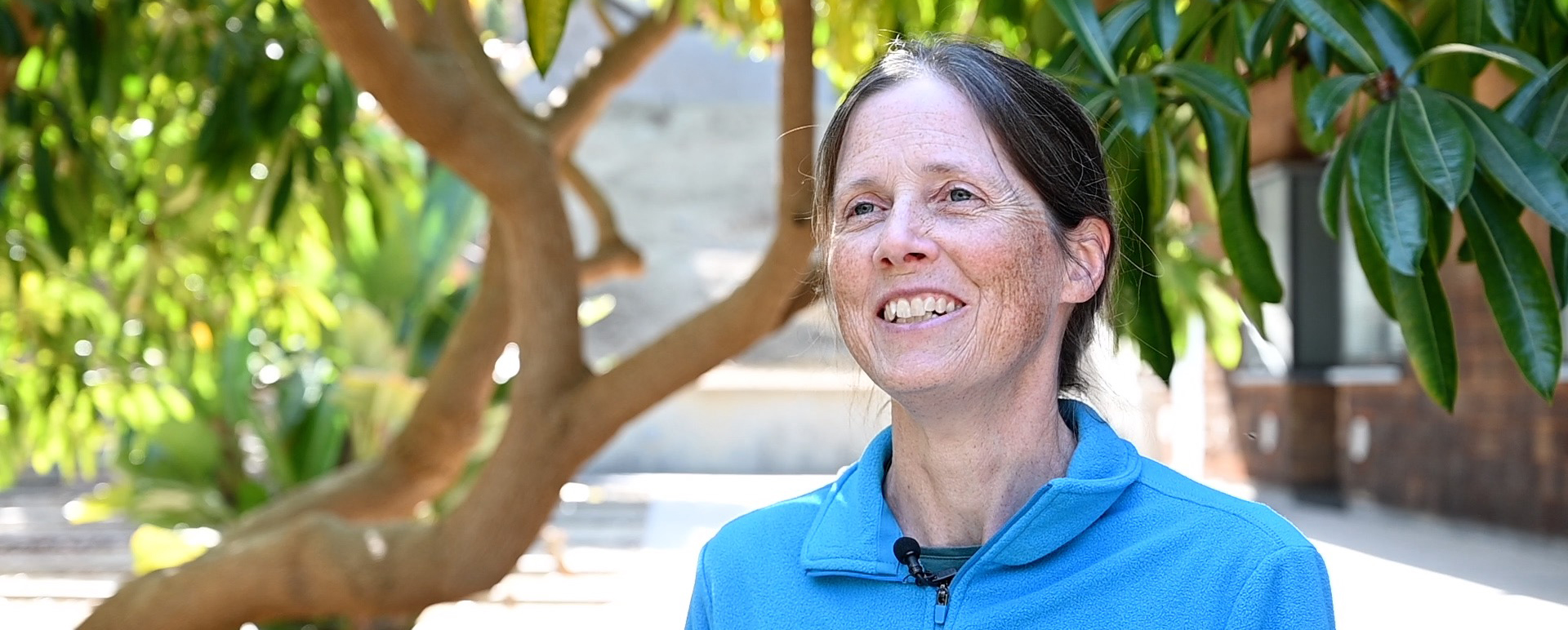Global S&T Development Trend Analysis Platform of Resources and Environment
| A Scientist’s Life: Sarah Gille | |
| admin | |
| 2020-02-06 | |
| 发布年 | 2020 |
| 语种 | 英语 |
| 国家 | 美国 |
| 领域 | 资源环境 |
| 正文(英文) |  Sarah Gille is a physical oceanographer at Scripps Institution of Oceanography at UC San Diego. She received a PhD in physical oceanography from the Massachusetts Institute of Technology–Woods Hole Oceanographic Institution Joint Program in 1995, and joined Scripps in 2000. explorations now: What do you do for a living? Sarah Gille: I'm a professor of physical oceanography. Physical oceanography looks at the physics of ocean circulation and the physics of ocean interactions with the atmosphere. I'm interested in what drives ocean circulation, what makes the ocean change, how the ocean is changing, and how the ocean talks to the atmosphere. Most of my research focuses on the Southern Ocean, the vast, expansive ocean that surrounds Antarctica. The Southern Ocean is warming faster than any other part of the global ocean in our modern record. en: What are some of the main questions in your field? SG: I started in physical oceanography because I really wanted to work on a science that would let me ask big questions that had relevance for climate and habitability of the planet. Physical oceanography lets us ask about how the climate system works, how it changes and what makes it work the way it does. It lets us ask a really rich array of questions. To my surprise, I ended up working on questions that are far broader than I ever thought I would work on. One of the big questions I face is how the ocean interacts with the atmosphere. It’s a big question because ultimately we live in the atmosphere; we’re at the very bottom of it so we really care about weather and climate, and a lot of that is determined by the heat and gases that are stored in the ocean. To answer that question, we need to know a lot more about processes in the upper ocean and the exchange of gases and heat at the air-sea interface. en: Describe some of your current projects. SG: I’m currently involved with the SOCCOM project, which stands for Southern Ocean Carbon and Climate Observations and Modeling. We’re interested in learning more about this region’s influence on global climate, which ties in directly with my research. en: What are some of the tools you use? SG: Southern Ocean research has been transformed by the availability of robotic sensors. The Argo float program has massively transformed our ability to collect data, especially in a place like the Southern Ocean that is so hard to get to by ship. We now get far more data in a month than we used to get in a decade. My group has also been involved in the SWOT satellite, the Surface Water and Ocean Topography satellite. It's a new version of a satellite altimeter that NASA and the French space space agency CNES are jointly planning to launch in 2021. It will measure sea surface height, not just directly below the satellite, but across a swath that will be about a hundred kilometers wide. That’s about the distance from the Mexican border to the Northern end of San Diego County. It will make measurements on the scale of 500 meters. It's a new window for us and we're really thinking hard about how we're going to use these data to better understand how the ocean moves. en: Why did you come to Scripps? SG: I came to Scripps because it’s a fantastic place to do research. I really value my colleagues and I’ve learned an immense amount from working with others here. It’s a very collaborative place and being somewhere like Scripps lets me do really interesting and exciting science with other researchers who are pushing the frontiers of their fields. – Chase Martin
|
| URL | 查看原文 |
| 来源平台 | Scripps Institution of Oceanography |
| 文献类型 | 新闻 |
| 条目标识符 | http://119.78.100.173/C666/handle/2XK7JSWQ/227939 |
| 专题 | 资源环境科学 |
| 推荐引用方式 GB/T 7714 | admin. A Scientist’s Life: Sarah Gille. 2020. |
| 条目包含的文件 | 条目无相关文件。 | |||||
| 个性服务 |
| 推荐该条目 |
| 保存到收藏夹 |
| 查看访问统计 |
| 导出为Endnote文件 |
| 谷歌学术 |
| 谷歌学术中相似的文章 |
| [admin]的文章 |
| 百度学术 |
| 百度学术中相似的文章 |
| [admin]的文章 |
| 必应学术 |
| 必应学术中相似的文章 |
| [admin]的文章 |
| 相关权益政策 |
| 暂无数据 |
| 收藏/分享 |
除非特别说明,本系统中所有内容都受版权保护,并保留所有权利。
修改评论